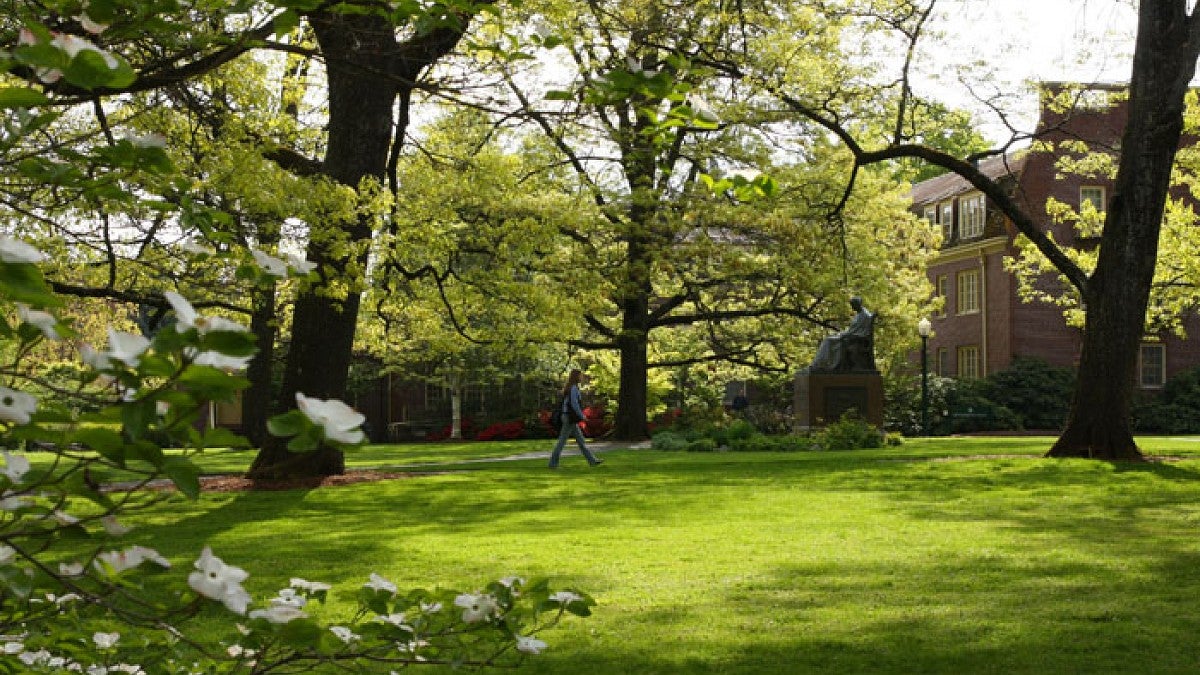The University of Oregon has achieved an ambitious goal set by the University Senate in 2000 to bring total faculty salary and benefits in line with average faculty compensation at similar top public research universities.
Recent data released by the American Association of University Professors (AAUP) shows that average UO compensation for tenure-related faculty is 99.3 percent of the average compensation of public Association of American Universities (AAU) peers in 2015. The number is 106.4 percent when adjusted for cost of living.
“The UO has significantly invested in faculty salaries over the last few years,” said Jamie Moffitt, vice president for finance and administration. “When combined with our very generous compensation package, including health care and retirement, total compensation is in line with our peer AAU public institutions.”
The UO Senate Budget Committee outlined in a 2000 white paper a specific goal of having average faculty compensation be at 95 percent of AAU peers. In 2014-15, full professors were at 95.4 percent of AAU public peers, while associate professors were at 101.6 percent and assistant professors at 104.1 percent. Adjusted for cost-of-living factors, the figures are 101.0, 109.8 and 112.7 percent, respectively.
David Frank, UO professor and former dean of the Clark Honors College, was a member of the Senate Budget Committee in 2000 with Nathan Tublitz, Mike Kellman and Wayne Westling.
“John Mosley, who was then provost, proposed to the Senate Budget Committee that it work with him on a white paper to outline the problem we saw with UO faculty salary and compensation and to suggest how we might move both to parity with our peer institutions," Frank said. “At that time, average faculty compensation was 82.1 percent of the mean compensation of UO peers. Fifteen years later the data suggests the UO is now at 99.3 percent of the mean compensation paid to our American Association of University faculty peers. We have to make data-based decisions and judgments.”
The recent data was published in the AAUP’s “The Annual Report on the Economic Status of the Profession.” The AAUP is an organization with the “purpose to advance academic freedom and shared governance, to define fundamental professional values and standards for higher education, and to ensure higher education’s contribution to the common good.”
The AAU Data Exchange recently reported that the UO has continued to make significant progress on faculty salaries when compared to AAU peers. The data, however, did not include benefits. A 2008 white paper called for bringing faculty salaries up to the average of UO comparators. Based on that recommendation, UO salaries should be 100 percent of AAU peers.
“It’s important to look at total compensation when it comes to making comparisons to our AAU peers,” Moffitt said. “The UO picks up 95 percent of our employees’ healthcare premiums and makes generous contributions to retirement accounts. When those numbers are factored in, it shows a more holistic and accurate view of total faculty compensation.”
A previous version of the story incorrectly stated the recommendation of a 2008 white paper. That paper, authored by Marie Vitulli, Peter Keyes, Mike Kellman, David Frank, Suzanne Clark, John Chalmers and Gordon Sayre, called "to bring our faculty's salaries up to the average (mean) relative to our comparators." To make the goal of the paper, UO faculty salaries would need to be at 100 percent of AAU peers. In 2015, UO faculty salaries averaged 94 percent of AAU peers.


